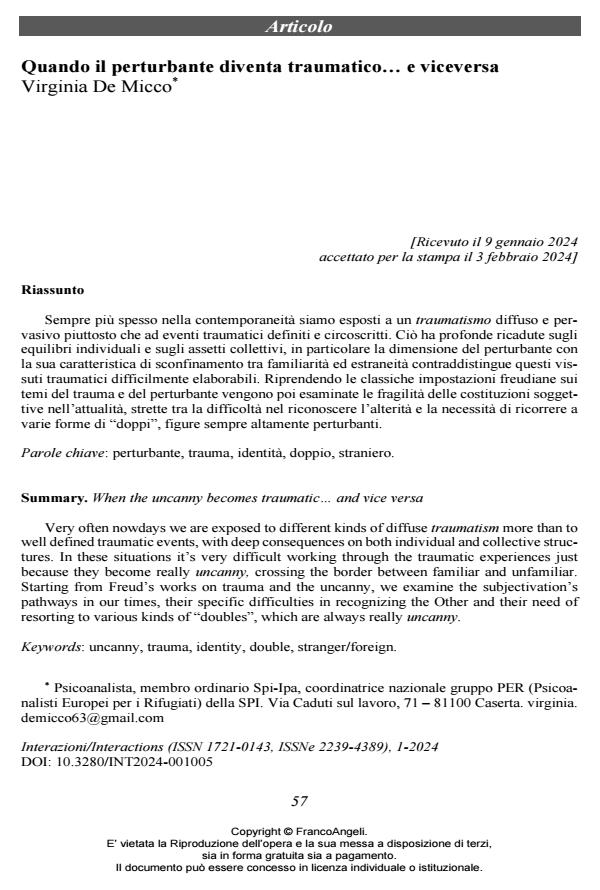Quando il perturbante diventa traumatico.. e viceversa
Titolo Rivista INTERAZIONI
Autori/Curatori Virginia De Micco
Anno di pubblicazione 2024 Fascicolo 2024/1
Lingua Italiano Numero pagine 22 P. 57-78 Dimensione file 228 KB
DOI 10.3280/INT2024-001005
Il DOI è il codice a barre della proprietà intellettuale: per saperne di più
clicca qui
Qui sotto puoi vedere in anteprima la prima pagina di questo articolo.
Se questo articolo ti interessa, lo puoi acquistare (e scaricare in formato pdf) seguendo le facili indicazioni per acquistare il download credit. Acquista Download Credits per scaricare questo Articolo in formato PDF

FrancoAngeli è membro della Publishers International Linking Association, Inc (PILA)associazione indipendente e non profit per facilitare (attraverso i servizi tecnologici implementati da CrossRef.org) l’accesso degli studiosi ai contenuti digitali nelle pubblicazioni professionali e scientifiche
Sempre più spesso nella contemporaneità siamo esposti a un traumatismo diffuso e perva-sivo piuttosto che ad eventi traumatici definiti e circoscritti. Ciò ha profonde ricadute sugli equilibri individuali e sugli assetti collettivi, in particolare la dimensione del perturbante con la sua caratteristica di sconfinamento tra familiarità ed estraneità contraddistingue questi vissuti traumatici difficilmente elaborabili. Riprendendo le classiche impostazioni freudiane sui temi del trauma e del perturbante vengono poi esaminate le fragilità delle costituzioni soggettive nell’attualità, strette tra la difficoltà nel riconoscere l’alterità e la necessità di ricorrere a varie forme di “doppi”, figure sempre altamente perturbanti.
Parole chiave:perturbante, trauma, identità, doppio, straniero.
Virginia De Micco, Quando il perturbante diventa traumatico.. e viceversa in "INTERAZIONI" 1/2024, pp 57-78, DOI: 10.3280/INT2024-001005